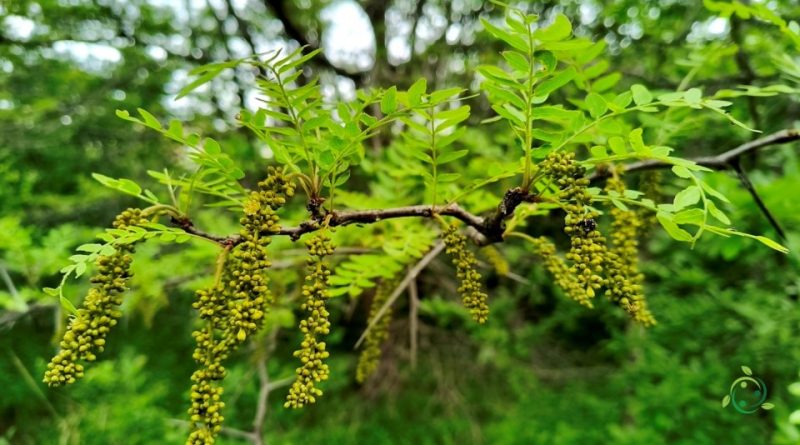Reproduction of honey locust
Reproduction of honey locust
Honey locust or thorny locust, thorny honeylocust (Gleditsia triacanthos L.) is a plant of the Fabaceae family native to North America but introduced to Europe in the 18th century.
Suitable breeding habitat –
Honey locust is a plant native to the eastern part of North America (United States and northern Mexico) and is widespread in a large part of the Mississippi basin, from Texas and Louisiana to the south, up to Iowa, Indiana and Ohio to the north. In the west, its range stops at Kansas and Nebraska, while in the east it stops at the foothills of the Appalachians.
The plant was introduced in Europe in the eighteenth century and in Italy in 1712, for ornamental purposes and for land consolidation. It has also been introduced in Italy as an ornamental tree in parks and gardens.
In Italy it is a neophyte plant naturalized in almost all regions (absent in Basilicata) and has become invasive in Trentino.
Its preferred habitat is rich, moist alluvial soils although it supports drier calcareous soils.
Propagation –
The Honey locust is a plant that prefers moist, deep and well-drained soils, as well as sunny exposures; it tolerates shade, pollution, alkaline, dry and compact soils quite well. It is quite tolerant of pruning, which must almost inevitably be done during the juvenile stage of formation.
It tolerates transplanting quite well and has a fairly fast growth and considerable longevity.
This plant is considered pestless outside its original range.
When planted close together and severely pruned, this species forms good windbreaks and hedges. With their usually very thorny trunks and branches, the hedge becomes a dense, thorny and very effective burglar barrier, and with its ability to fix atmospheric nitrogen, it also enriches the soil.
Propagation can occur by seed; in this case it is recommended to pre-soak for 24 hours in warm water and then sow in the nursery.
The seed should have swollen, in which case it can be sown, if it hasn’t swollen, immerse it for another 24 hours in warm water. If this does not work it is advisable to scarify away some of the seed coat but be careful not to damage the embryo. Further soaking should then cause the seed to swell. Once swollen, the seed should germinate within 2 – 4 weeks at 20°C.
As soon as the young seedlings are large enough to handle, they should be placed in individual deep pots. The transplant must then be carried out when they are large enough.
Ecology –
Honey locust is a plant native to the southeastern United States, in the Mississippi River basin (Virginia), and also inhabits the southern Great Plains, Texas and northern Mexico.
The plant introduced in various parts of the world, such as in Europe, has often become invasive and therefore its introduction should be carefully evaluated.
For example, it has become invasive in many prairies of the Argentine Pampas, as the livestock appreciate its legumes and disperse the indigestible seeds (endozoochory). It has also become a real problem in Uruguay and official measures have been taken to combat it.
Today it is cosmopolitan. It is believed to have been introduced to Argentina from the United States in the early 19th century, with European colonization, when the Pampa region was a treeless ocean of grass and it began to be necessary to wire fields and build fences. Over the years it has become a very aggressive invasive species in several ecosystems, from Buenos Aires to Tucumán and from Córdoba to Argentine Mesopotamia.
It was introduced to Europe directly from eastern North America in the 17th century. It has adapted perfectly to the climate of Spain and many other countries. It is used as an ornamental in parks and gardens due to its elegant appearance. Sometimes it is also used as a hedge because it has three-pointed sharp thorns up to 20 cm long, even if there is a variety called unarmed characterized by the absence of these thorns. It has naturalized in many areas and grows in the gardens of abandoned houses, along the roads and on the banks of the rivers.
A note in conclusion concerns the ability to fix nitrogen. Many scientific sources state that Gleditsia does not fix nitrogen. Some support this claim with the fact that Gleditsia does not form root nodules with symbiotic bacteria, assuming that no nitrogen fixation can occur without nodulation. However, there are anatomical, ecological and taxonomic indications of nitrogen fixation in non-nodulating legumes.
How this occurs is not yet well understood, but there have been some observations of nitrogenase activity in non-nodulating legumes, including this plant.

